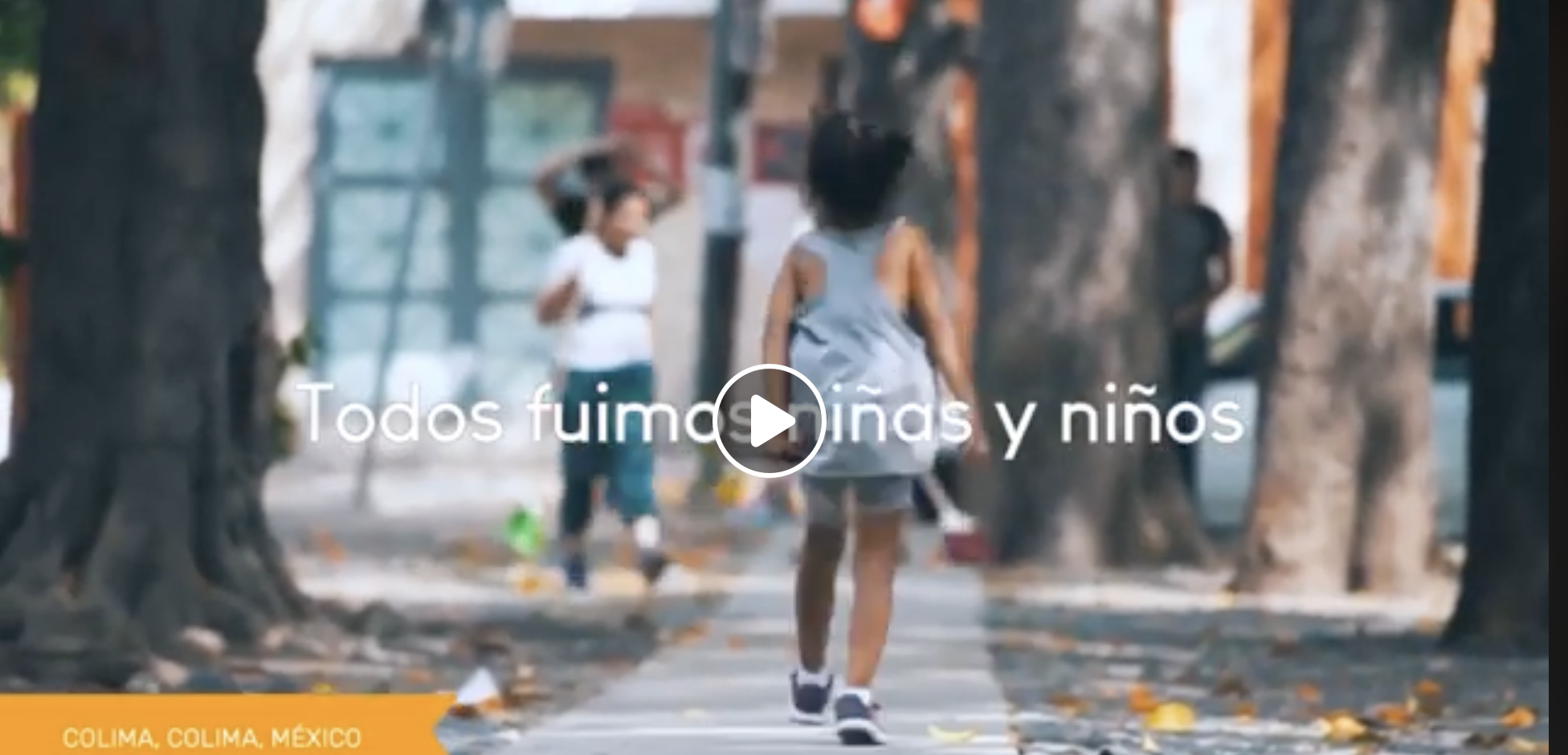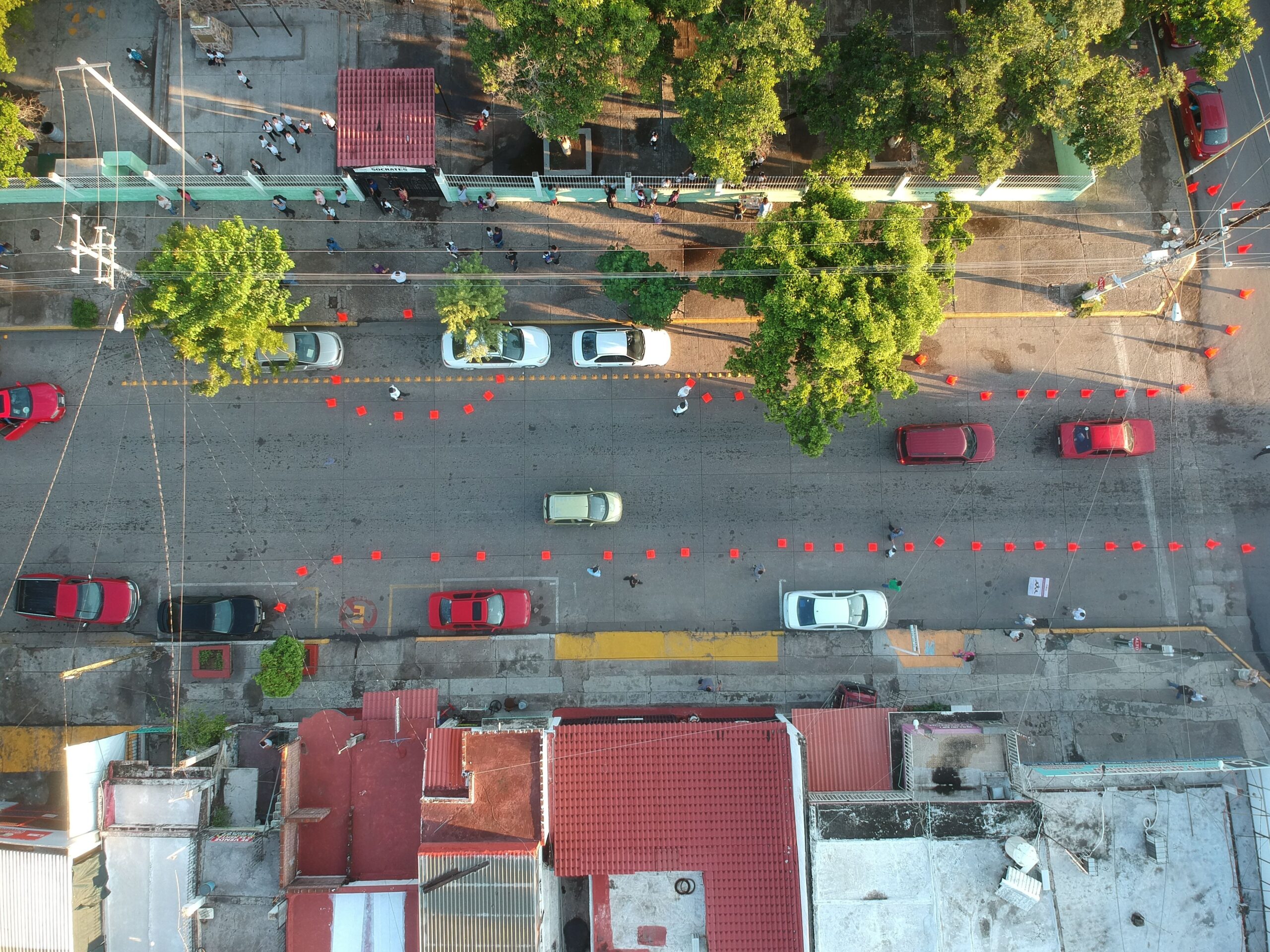October, 2018
Launching of the ‘Vamos Primero’ program
This event was led by the state governor and two mayors.
The ‘Vamos Primero’ program was born in 2018 from the Botnar Child Road Safety Challenge, it’s a program that at first focused on reducing road traffic crashes in school environments through speed management, now it has evolved to become a program for the generation of healthy, safe, and sustainable school environments.
May, 2019
First Tactical Urbanism Intervention in the state of Colima.
The tactical urban intervention was a temporary infrastructure intervention aimed at demonstrating speed reduction through modification of the road design, achieving a 32% reduction in average vehicle speed. The results of this test were key to define a permanent infrastructure redesign.
November, 2019
Publication of a State Regulation of Road Safety
This regulation establishes new speed limits state-wide, defining a maximum speed limit of 20 km/h, around urban equipment’s such as schools, parks, and hospitals.
January, 2020
Infrastructure intervention in one of the city’s riskiest school environments
Through the diagnosis, the school zone where 1 out of every 3 road traffic crashes occurred during school start and end times was identified, where no motorist respected the 20 km/h speed limit and where more than 2,500 students attend. The intervention consisted of the construction of a speed humps, curb extensions, sidewalks, and placement of signals. These measures reduced the average speed by 19%, which translates into a reduction of up to 64% of fatal collisions and 48% of collisions resulting in serious injuries.
February, 2022
Collaboration agreement signed with the government of Colima
In November 2021 a new government took office in the state of Colima, due to this change it was necessary to prepare a new Memorandum of Understanding that reaffirmed the coordination for the development of the program with the new ministries.
June, 2022
Speed Surveillance and Control Workshop
The workshop was directed by the GRSP team where 37 agents in charge of regulation and control participated. The workshop focused on conveying to the agents the importance of surveillance and control in road safety and sharing knowledge regarding good practices of the ‘Safe System’ approach. Additionally, it also showed different technologies and methods for speed surveillance and control, as well as identifying contextual elements according to each environment, all in order to install technical capacities in the police to achieve measurable results in terms of public health by preventing deaths and injuries caused by road traffic crashes.
October, 2022
Launch of SIMOS
Development and launch of the integrated system of safe mobility- SIMOS. This is an open-source tool that integrates and serves as a data repository of population, infrastructure conditions, mobility, and road crash data- making it a pioneering tool for data integration nationwide that can be scale to other latitudes.
February, 2023
Participatory mapping conducted
This the tool allows students to identify the places that they like or dislike on their commutes to school by registering their geographic location and filling up a questionnaire. This helps obtain qualitative information to improve infrastructure conditions on the route to school.





























